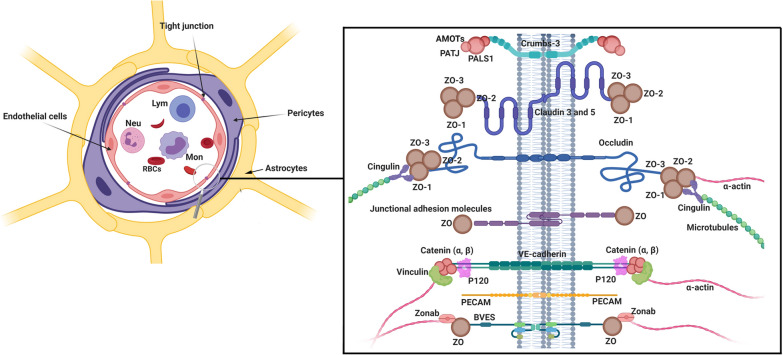Fig. 2.
Cellular constituents of BBB neurovascular unit. The cooperation of brain ECs, pericytes, and end-feet astrocytes together establish a unique protective barrier restricting blood cell transfer to brain parenchyma. Pericytes surround ECs throughout the cytoplasm and wrap the abluminal side of ECs. ECs are interconnected by expressing different types of junctional adhesion molecules (JAMs). Claudins, occludin, and JAMs are the most functional proteins present in TJs with active participation in the regulation of various biomolecules exchange. The transmembrane adhesion complexes are linked to the cytoskeleton through a series of cytoplasmic adaptors including zonula occludens (ZO)-1, ZO-2, cingulin, Jacob, membrane-associated guanylate kinase inverted (MAGIs), and Membrane palmitoylated proteins (MPPs). The TJs interact with basal adherens junctions (AJs) and are linked to the actin/vinculin-based cytoskeleton by catenins. Lym Lymphocytes, Neu Neutrophils, Mon Monocytes, RBC Red blood cells

